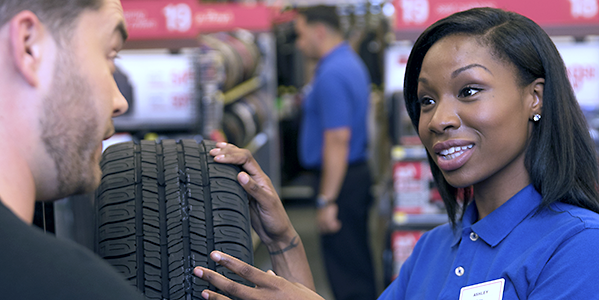Tire Service: Comprehending Tire Stress Monitoring Equipments
Understanding Tire Pressure Monitoring Systems (TPMS) is an essential aspect of maintaining optimal vehicle performance and safety and security on the roadway. With innovations in auto modern technology, TPMS has actually come to be a typical attribute in modern-day automobiles, giving real-time details on tire pressure levels.

Significance of TPMS
The importance of Tire Pressure Surveillance Systems (TPMS) hinges on their capacity to boost lorry safety and security and performance with real-time surveillance of tire stress degrees. Preserving the proper tire pressure is essential for guaranteeing optimal handling, stopping, and general security of a lorry. TPMS provides vehicle drivers with prompt responses on any type of underinflated or overinflated tires, allowing for timely modifications to be made.
Parts of TPMS
Consisting of various necessary elements, a Tire Pressure Surveillance System (TPMS) functions as an innovative security attribute in modern lorries. The major parts of a TPMS consist of sensors, a control module, and a caution sign. Sensing units are normally located in the tire shutoff stem or affixed to the wheel assembly, where they determine tire stress and send data to the control module. The control component processes this details and triggers a warning if it discovers dramatically reduced pressure in any of the tires. The caution sign, typically a sign on the dashboard, informs the vehicle driver to examine the damaged tire or tires. Some advanced TPMS models also present the actual tire pressure readings for each and every tire, offering chauffeurs with real-time details to make sure ideal tire efficiency and safety and security. By monitoring tire pressure continuously, TPMS aids protect against crashes, minimizes tire wear, and enhances fuel performance, making it a critical part for lorry safety and security and efficiency.
Sorts Of TPMS

On the other hand, indirect TPMS counts on the lorry's wheel rate sensors to keep track of tire pressure. This system identifies underinflation by comparing the rotational speeds of the wheels. Indirect TPMS is less costly than direct TPMS, as it utilizes existing sensing units within the vehicle.
While direct TPMS uses a lot more accurate readings, indirect TPMS is simpler in layout and generally needs less maintenance. Both systems have their advantages and restrictions, and the choice between them typically relies on aspects such as expense, lorry make, and personal choice. Recognizing the differences between these 2 kinds of TPMS can aid lorry owners make informed choices regarding tire upkeep and safety and security.
TPMS Maintenance Tips
Conduct regular checks on the tire pressure degrees and compare them with the TPMS analyses to guarantee they are regular. Throughout tire turning or replacement, make certain that the TPMS elements are handled carefully to stop any kind of potential damage. If the TPMS warning light brightens on the dashboard, attend to the problem quickly by checking the tire stress and the total system for any type of mistakes.
Advantages of Correct Tire Stress
Maintaining appropriate tire over at this website pressure, as highlighted in TPMS Upkeep Tips, is important for enjoying the numerous advantages connected with ideal tire pressure click to read levels. Among the key benefits of keeping the right tire stress is boosted fuel effectiveness. When tires are appropriately pumped up, there is much less moving resistance, bring about far better gas economic climate. In addition, appropriate tire stress makes certain even tire wear, expanding the lifespan of the tires and promoting more secure driving conditions. With the right tire pressure, lorries also have far better handling and grip, especially in unfavorable climate condition. This can boost overall driving performance and safety for the chauffeur and travelers. Moreover, preserving optimum tire stress can add to a smoother and more comfy ride by lowering resonances and noise brought on by underinflated tires. To conclude, the advantages of appropriate tire pressure exceed simply tire long life; they include enhanced fuel efficiency, boosted security, better car performance, and total driving convenience.
Verdict
In verdict, recognizing tire pressure monitoring systems (TPMS) is essential for maintaining optimum tire stress and guaranteeing lorry security. By recognizing the relevance of TPMS, being familiar with its elements, understanding the various types offered, sticking to correct maintenance ideas, and understanding the benefits of preserving correct tire pressure, vehicle drivers can enhance their driving experience and extend the life expectancy of their tires. Appropriate tire pressure is essential to risk-free and effective automobile operation.
